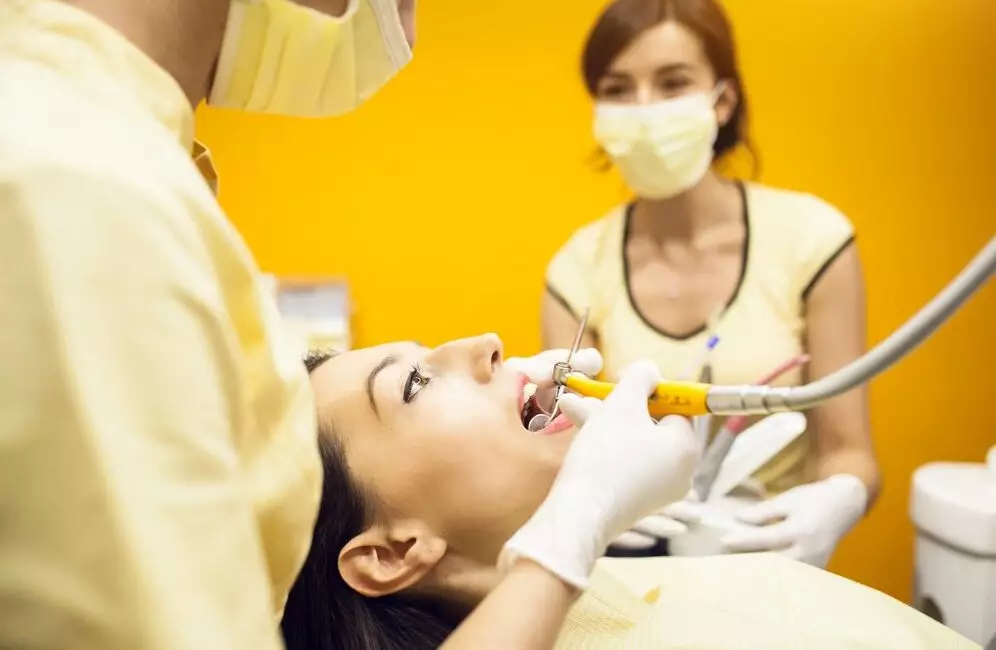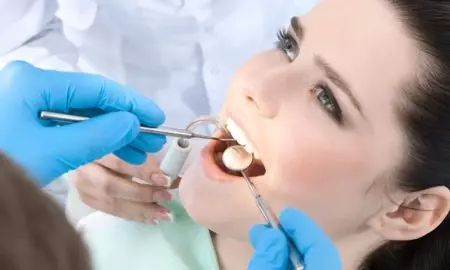Pulpitis treatment is a procedure that treats inflammation of the soft tissues of the tooth, or pulp. Anyone who has ever experienced the problem knows how painful it can be. Therefore, if you feel even the slightest discomfort, call our clinic of family dentistry “Dent-House” in Odessa and make an appointment. Our specialists will diagnose and solve the problem in the shortest possible time, while the cost of treatment will be adequate.
Causes of dental pulpitis

Pulpitis occurs for a number of reasons:
- Deep caries is the most common cause of pulpitis. It is a tooth lesion caused by acids produced by bacteria in the mouth. They destroy the hard tissue of the tooth and can penetrate down to the soft tissue, causing inflammation of the pulp.
- Trauma. A bump or fall can damage a tooth and cause inflammation of the pulp.
- Bacterial infection. Can enter the tooth through a cavity or crack.
- Temperature extremes. For example, a sudden change of hot and cold food.
- Unsuccessful treatment. Too deep a filling, trauma to the gum, poor-quality filling material can also lead to inflammation of the pulp.
Pulpitis is also sometimes caused by an infection that has entered through the blood, as well as periodontitis, maxillitis or tonsillitis, secondary caries under a filling.
Types of dental pulpitis
Basically, two pulpitis of the teeth are distinguished:
- Acute. This is a form characterised by sharp pain, often caused by tooth decay or trauma. Acute pulpitis can be focal – in one place. If left untreated, the disease progresses to the diffuse stage – spreading to the entire pulp. Pain lasts for several days and usually intensifies at night. Purulent pulpitis is accompanied by abscesses and pus accumulation. If left untreated, the infection can enter the bloodstream.
- Chronic. If you do not treat acute pulpitis, it will turn into a chronic stage. In this case, the disease can be fibrotic, hypertrophic or gangrenous. In the first form, the pulp tissue is gradually replaced by connective tissue. At the hypertrophic stage of the disease through carious tissues sprout soft, and with gangrenous pulpitis, the tissues decompose and die. In such pulpitis, the tooth may hurt not constantly, but periodically.
The type of pulpitis is determined by the doctor.
Symptoms of acute pulpitis
How do you know if you have pulpitis? The following symptoms usually indicate the presence of the disease:
- One of the most characteristic signs of acute pulpitis is sharp, intense pain in the tooth. It can be sharp, pulsating or intensified by eating. Unpleasant symptoms can also be felt in the cheek, jaw, and temple.
- A tooth with acute pulpitis may react to changes in temperature, causing sharp pain when exposed to hot or cold drinks and food.
- The pain of acute pulpitis is worse at night – often the person cannot sleep.
- The pain gets worse if the tooth with pulpitis is pressed or bitten on.
- In some cases, acute pulpitis causes swelling and redness of the gum around the affected tooth.
- Pulpitis can lead to bad taste or odour in the mouth due to the decay of tissue inside the tooth.
If you notice any of the above symptoms, do not delay treatment. Find out the cost of the procedure and make an appointment at the Dent-House Clinic in Odessa.
Diagnosis of pulpitis
Diagnosing pulpitis is usually straightforward and takes minimal time. The dentist begins by carefully examining your tooth and asking about your symptoms. The dentist may also use special tools, most commonly a probe, to check his or her assumptions.
To better determine the problem, your doctor will take x-rays of your tooth or perform other tests. This will help you see the extent of the lesion, whether there is inflammation inside the tooth, or other problems that may be causing pulpitis.
Remember, only a diagnosis helps your doctor identify problems and choose the right treatment for you.
Pulpitis treatment methods

Pulpitis treatment in Odessa depends on the severity and cause of the disease. Basically, the following technique is used:
- Treatment of caries and removal of the affected tissue.
- If the pulp is slightly inflamed, a biological treatment method is used – the doctor puts medication to relieve the inflammation and then covers the tooth with a temporary filling. If the inflammation is gone, the filling is replaced with a permanent one. In this case, it is important to check the condition of the tooth at least once a year.
- Pulpotomy or pulpectomy. In the first case, only a section of the affected pulp is removed from the canals. In the second case, the pulp must be removed completely. For this purpose, special instruments and sometimes preparations are used. Then the canals are disinfected with special solutions.
- This is followed by a root filling. This is a procedure in which the doctor fills the canals with special materials to prevent secondary infection.
- The last step of the filling is to cover the tooth with a crown or filling.
In most cases, your doctor will prescribe antibiotics or anti-inflammatory drugs to relieve inflammation and reduce pain.
If pulpitis occurs in the “eights” – the so-called “wisdom teeth” – it is possible to extract the tooth instead of treating the canals.
The price of pulpitis treatment depends on your individual case. To find out the approximate cost of the treatment at Dent-House, please contact the receptionist.
Prevention of pulpitis
Prevention of pulpitis includes the following steps:
- Brush your teeth at least twice a day. This helps remove food debris and prevents plaque buildup, which can lead to cavities and pulpitis. Also use flos and mouthwashes.
- Be sure to get rid of even small areas of tooth decay. Untreated tooth decay is the most common cause of pulpitis.
- Avoid excessive consumption of sweet and sour foods as they promote tooth decay. Eat a healthy diet rich in vitamins and minerals.
- Avoid biting hard objects and do not open anything with your teeth.
- Use a sports helmet or mouth guard when playing sports or other activities where dental injuries may occur.
- Stop smoking.
By following these simple guidelines, you will keep your teeth healthy and prevent pulpitis from developing.
The best prevention of pulpitis is to visit the Dent-House Family Dentistry Clinic in Odessa for preventive check-ups and professional cleanings regularly. This will help identify dental problems at an early stage and prevent them from developing. So if you haven’t visited the dentist for a long time or you have problems, make an appointment at our clinic in Odessa. We will help to solve any difficulties – we work with children, do myography, put braces, whiten teeth. Our doctors will quickly and painlessly help you regain a beautiful smile and life without pain.
Frequently asked questions about pulpitis treatment
🦷 Is it possible to cure pulpitis in one visit?
😁 How is pulpitis treated in dentistry?
🦷 How much does dental pulpitis treatment cost?
😁 What are the risks of not treating pulpitis?
Cost of services
Specialists

Semenyuk Ekaterina Sergeevna
Dentist

Kirilyuk Yulianna Ivanovna
Pediatric dentist

Furduy Ekaterina Sergeevna
Pediatric dentist








